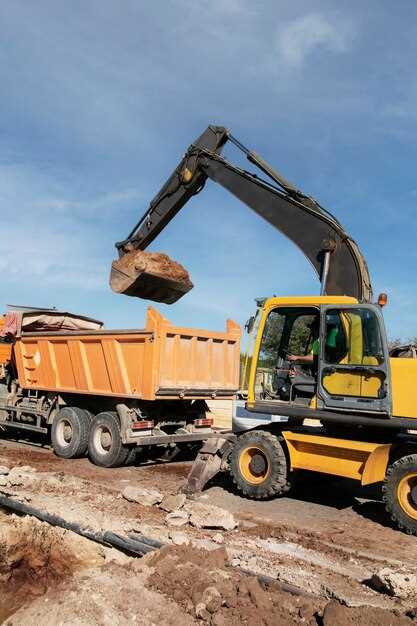
In the world of construction and heavy-duty tasks, having the right equipment can make all the difference in efficiency and productivity. Work trucks are essential tools that transport materials, equipment, and personnel to and from job sites. With an array of options available, selecting the best work truck tailored to specific needs is crucial for any operation.
Heavy-duty work trucks are designed to handle demanding environments, featuring robust build quality and advanced capabilities. These vehicles stand out not only for their towing and hauling capacities but also for their reliability and ease of maintenance. When evaluating work trucks, factors such as payload capacity, off-road capabilities, fuel efficiency, and safety features should be prioritized to ensure they meet the rigorous demands of various job sites.
This article will delve into the top work trucks on the market, highlighting their key features and advantages. By understanding the strengths of each model, businesses can make informed decisions to equip their teams with the right tools for success. Whether it’s for construction, landscaping, or any heavy-duty task, choosing the appropriate work truck can significantly enhance operational effectiveness.
Choosing the Right Truck for Specific Job Site Needs

Selecting the appropriate truck for job sites and heavy-duty tasks is crucial for maximizing efficiency and productivity. Different jobs require different capabilities, and understanding these needs is the first step in making an informed choice.
Payload Capacity is a primary consideration. For construction sites, trucks with a higher payload capacity, such as 3/4-ton or 1-ton models, are ideal for transporting heavy materials like bricks, concrete, and large tools. Smaller jobs may benefit from half-ton trucks, which offer ample capacity without the cumbersome size.
Next, evaluate drivetrain and drivetrain types. All-wheel drive (AWD) or four-wheel drive (4WD) trucks are recommended for rough terrains. They provide better traction and stability on uneven or muddy surfaces typically found at construction or logging sites. In contrast, two-wheel drive (2WD) trucks are suitable for smooth, paved environments.
Bed configuration plays a significant role in versatility. Trucks with a longer bed provide extra space for transporting materials but may be less maneuverable in tight job sites. Consider whether a standard or crew cab is necessary based on whether you need additional passenger space for workers.
Fuel efficiency must also be factored into your decision. While larger trucks usually have a higher fuel consumption rate, advancements in technology have led to some heavy-duty vehicles being surprisingly fuel-efficient. Opting for trucks with diesel engines can result in better fuel economy and torque, which is advantageous for heavy hauling.
Another crucial aspect is safety features. Look for trucks equipped with advanced safety technologies such as rearview cameras, blind-spot monitoring, and stability control systems. These features aid in reducing accidents and improving overall site safety.
Lastly, consider the brand and model reputation. Some manufacturers specialize in rugged, heavy-duty trucks known for longevity and performance in tough environments. Researching feedback and reviews can provide insight into which models have proven reliable in similar tasks.
By carefully assessing these factors, you can choose the right truck that meets the specific demands of your job site, ultimately enhancing productivity and safety.
Comparing Performance and Specifications of Leading Truck Models

When evaluating the best work trucks for job sites and heavy-duty tasks, performance and specifications are paramount. Several leading truck models stand out due to their engineering, reliability, and capacity to handle tough environments.
The Ford F-Series Super Duty trucks, including the F-250 and F-350, are renowned for their robust towing capabilities and powerful Power Stroke diesel engines. The F-250 offers a maximum towing capacity of up to 20,000 pounds, while the F-350 can pull an impressive 35,000 pounds when properly equipped. Their payload capacity ranges from 3,700 to 7,850 pounds, making them ideal for hauling heavy equipment.
Meanwhile, the Chevrolet Silverado 2500 HD and 3500 HD series offer similar capabilities with slightly different specifications. The Silverado 2500 HD can tow up to 18,500 pounds, while the 3500 HD boasts a staggering maximum of 36,000 pounds. Payload ratings are competitive as well, reaching up to 7,442 pounds. Both models feature advanced safety technologies and durable construction, minimizing downtime on job sites.
Ram trucks, particularly the Ram 2500 and 3500, are known for their ride comfort and interior quality, alongside impressive performance metrics. The Ram 2500 has a maximum towing capacity of 19,980 pounds, whereas the Ram 3500 can handle up to 37,100 pounds. Their payload capacities also reach up to 7,680 pounds, making them a versatile choice for contractors.
For those considering alternative fuel options, the Toyota Tundra offers a hybrid variant that combines efficiency with sufficient power for worksite tasks. It has a towing capacity of 12,000 pounds and a payload rating of 1,940 pounds, making it suitable for those who require a reliable truck with lower environmental impact.
The GMC Sierra 2500 HD and 3500 HD share similar capabilities with the Silverado, emphasizing technology and luxury features. They can achieve towing capacities of up to 36,000 pounds and payloads up to 7,442 pounds, which is appealing to users looking for a blend of performance and comfort.
Finally, the Nissan Titan XD serves as a competitive option with its unique diesel engine. It can tow about 12,710 pounds and has a payload capacity of 2,390 pounds. While it doesn’t quite match the towing capacities of its competitors, it offers solid performance for smaller jobs.
In summary, when selecting a work truck for job sites, it’s crucial to prioritize your specific needs–whether it be towing capacity, payload limits, or comfort features. Each of these leading models provides impressive specifications to meet various heavy-duty requirements.
Maintenance Strategies for Longevity and Reliability in Work Trucks
Effective maintenance is essential for ensuring the longevity and reliability of work trucks used on job sites. Implementing systematic strategies can prevent breakdowns and extend vehicle lifespan.
Firstly, regular inspections are critical. Schedule routine checks every 5,000 miles or as recommended by the manufacturer. Focus on essential components like brakes, tires, and fluid levels. Identifying wear and tear early can prevent costly repairs down the line.
Secondly, establish a comprehensive fluid maintenance plan. Regularly change engine oil, transmission fluid, coolant, and brake fluid. Utilizing high-quality fluids can improve performance and efficiency. Stick to the recommended change intervals specified in the owner’s manual to ensure optimal operation.
Thirdly, tire maintenance should not be overlooked. Maintain proper tire pressure, as under-inflated tires can lead to poor handling and increased fuel consumption. Rotating tires regularly helps to promote even wear, extending overall tire life.
Additionally, focus on brake maintenance. Inspect brake pads and rotors frequently for signs of wear. Replacing them on a timely basis will ensure safety on job sites and prevent further damage to the braking system.
Another critical aspect is the battery. Regularly check battery connections and clean terminals to avoid corrosion. If a battery is more than three years old, consider testing it frequently, as older batteries may fail unexpectedly, impacting productivity.
Moreover, keeping the truck’s exterior clean from mud, debris, and salt will prevent rust and corrosion. Regular washing and applying protective coatings can help preserve the vehicle’s body and frame integrity.
Lastly, document all maintenance activities. Keeping a detailed log helps track services performed, warranties, and any vehicle issues. This data can assist in identifying recurring problems and guide future maintenance decisions.
By implementing these maintenance strategies, work trucks can operate more reliably, thus supporting heavy-duty tasks and increasing overall productivity on job sites.



